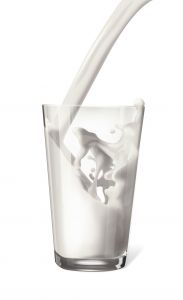I recently had a patient inquire about the use of calcium in her diet. She is getting older and realizes how important calcium is in protecting her bones now and later in life. However, like many vitamins, it gets confusing when trying to understand when and how to get calcium.
If you aren’t having any medical concerns that require a supplement, you should first try to increase the amount of calcium you are consuming in your diet. Dairy products such as, milk, cheese and yogurt contain a good source of calcium. Legumes, quinoa, broccoli, leafy greens, and seafood also contain a good source of calcium. Many foods are fortified with calcium to help us meet our needs, as you can see on many juice and cereal labels.
Just like many other vitamins and minerals, certain foods or other vitamins can impact the absorption of calcium. Oxalic acid found in spinach, chard and beet greens interferes with the absorption of calcium found in those foods. Meaning that eating spinach by itself will be a good source of vitamins and minerals, but not necessarily a good source of calcium. On the other hand, Vitamin D is essential in calcium absorption as it aids in the metabolism of calcium. Ensuring that you get enough Vitamin D, will improve calcium stores. Finally, small amounts of vitamin C, mainly found in citrus fruits, is thought to help calcium absorption.
If necessary, calcium supplements can be used to support increased calcium in the body. The two most common forms of supplements are calcium carbonate and calcium citrate. Both forms should not be taken in amounts greater than 600mg at one sitting due to absorption. However, these can be taken multiple times throughout the day to achieve best absorption and needed intake.
Overall, looking for ways to increase calcium in our normal diet can help us prevent many health concerns and issues. Remember, the dietary reference intake for calcium is as follows:
1000mg/day ages 19-50
1200mg/day females ages 51-70 and greater *this amount increases at this age due to increased risk for osteoporosis
Are you getting enough calcium in your diet?
If you aren’t having any medical concerns that require a supplement, you should first try to increase the amount of calcium you are consuming in your diet. Dairy products such as, milk, cheese and yogurt contain a good source of calcium. Legumes, quinoa, broccoli, leafy greens, and seafood also contain a good source of calcium. Many foods are fortified with calcium to help us meet our needs, as you can see on many juice and cereal labels.
Just like many other vitamins and minerals, certain foods or other vitamins can impact the absorption of calcium. Oxalic acid found in spinach, chard and beet greens interferes with the absorption of calcium found in those foods. Meaning that eating spinach by itself will be a good source of vitamins and minerals, but not necessarily a good source of calcium. On the other hand, Vitamin D is essential in calcium absorption as it aids in the metabolism of calcium. Ensuring that you get enough Vitamin D, will improve calcium stores. Finally, small amounts of vitamin C, mainly found in citrus fruits, is thought to help calcium absorption.
If necessary, calcium supplements can be used to support increased calcium in the body. The two most common forms of supplements are calcium carbonate and calcium citrate. Both forms should not be taken in amounts greater than 600mg at one sitting due to absorption. However, these can be taken multiple times throughout the day to achieve best absorption and needed intake.
Overall, looking for ways to increase calcium in our normal diet can help us prevent many health concerns and issues. Remember, the dietary reference intake for calcium is as follows:
1000mg/day ages 19-50
1200mg/day females ages 51-70 and greater *this amount increases at this age due to increased risk for osteoporosis
Are you getting enough calcium in your diet?
Information from: Eat Right.org-https://www.bbvitamins.com/wp-content/uploads/ADA_Calcium.pdf
Photo from freeimages.com
Photo from freeimages.com






 RSS Feed
RSS Feed

